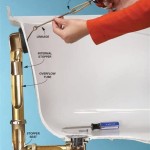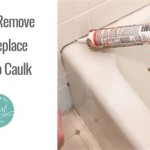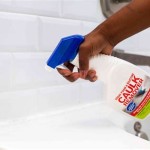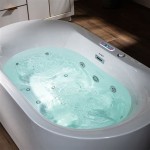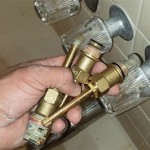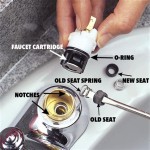How To Clean an Old Bathtub Drain
An old bathtub drain can become a breeding ground for grime, hair, soap scum, and various other debris over time. This accumulation can lead to slow draining, unpleasant odors, and even complete blockage. Therefore, regular cleaning is crucial for maintaining a functional and hygienic bathroom. This article outlines several effective methods for cleaning an old bathtub drain, ranging from simple home remedies to more involved mechanical approaches.
Preventative Measures: The First Line of Defense
Before delving into cleaning techniques, understanding preventative measures is paramount. Consistent practices can significantly reduce the frequency and severity of drain clogs. A primary preventative measure is the installation of a drain strainer or screen. These devices effectively capture hair, soap scum, and other solid particles before they enter the drainpipe. Strainers are available in various materials, including plastic, metal, and silicone, catering to different aesthetic preferences and budgets. Regularly cleaning the strainer itself is also essential. This involves removing accumulated debris after each shower or bath, preventing it from decomposing and contributing to clogs further down the drain.
Another effective preventative measure is to avoid pouring grease, oil, or other viscous substances down the drain. These substances solidify as they cool, adhering to the pipe walls and trapping other debris. Instead, dispose of grease and oil in a separate container for proper disposal. Similarly, try to minimize the amount of soap scum that enters the drain. Using liquid soap instead of bar soap can help, as liquid soap tends to dissolve more readily and leave less residue. Periodically flushing the drain with hot water can also help dissolve any lingering soap scum or other soluble debris.
Finally, be mindful of what is being rinsed down the drain during cleaning activities. Small objects, such as cotton swabs, dental floss, or even small toys, can easily become lodged in the drainpipe, causing a major blockage. Implementing these preventative measures can significantly extend the time between necessary drain cleanings and minimize the risk of severe clogs.
Simple Home Remedies: Natural and Effective Solutions
When preventative measures fail, and a drain becomes slow or partially clogged, simple home remedies can often provide an effective solution. These methods typically involve readily available household items and are generally safe for older plumbing systems. The most popular and widely used home remedy involves baking soda and vinegar. This combination creates a chemical reaction that helps to break down organic matter and loosen clogs.
To use the baking soda and vinegar method, begin by pouring one cup of baking soda down the drain. Follow this with one cup of white vinegar. The mixture will begin to fizz and bubble, which is the intended effect. Allow the mixture to sit in the drain for at least 30 minutes, or preferably overnight, for optimal results. After the waiting period, flush the drain with hot water. The hot water will help to wash away any remaining debris and clear the clog. This process can be repeated multiple times if necessary.
Another effective home remedy involves using boiling water alone. This method is particularly useful for dissolving soap scum and grease buildup. Carefully pour a kettle full of boiling water down the drain. Exercise caution when handling boiling water to avoid burns. The hot water will melt away the grease and soap scum, allowing the drain to flow freely. This method is most effective when used on a regular basis to prevent buildup from becoming too severe. It is important to note that boiling water may not be suitable for all types of pipes, especially older PVC pipes, as the extreme heat can potentially damage them. If you are unsure of your pipe material, consult a professional plumber before using this method.
A combination of baking soda, salt, and boiling water can also be used. Pour about half a cup of baking soda followed by half a cup of salt down the drain. Let it sit for a few hours, and then follow with boiling water. The salt acts as an abrasive, helping to dislodge stubborn buildup. Finally, using a plunger can sometimes dislodge a clog that the home remedies have loosened but not completely removed. Make sure there is enough water in the tub to cover the cup of the plunger, and then plunge vigorously for several minutes.
Mechanical Methods: When More Force is Needed
When home remedies prove insufficient, mechanical methods may be necessary to clear a stubborn drain clog. These methods involve using tools to physically remove or break up the blockage. The most common mechanical tool for clearing bathtub drains is a drain snake, also known as a plumbing snake or auger. This tool consists of a flexible metal cable with a coiled head that can be inserted into the drainpipe to break up or retrieve clogs.
To use a drain snake, carefully insert the coiled head into the drain opening. Rotate the handle of the snake while pushing it further into the drainpipe. If you encounter resistance, continue rotating the handle to break through the clog. Once you have broken through the clog, continue rotating the handle to gather the debris in the coiled head. Carefully pull the snake out of the drain, removing any accumulated debris. Repeat this process until the drain flows freely. Exercise caution when using a drain snake to avoid damaging the drainpipe. It is also important to wear gloves to protect your hands from dirt and bacteria.
Another mechanical method involves removing the drain stopper. Over time, hair and other debris can accumulate around the drain stopper, causing a clog. Depending on the type of stopper, it may be possible to remove it and clean it manually. Some stoppers can be lifted straight out, while others may require unscrewing or loosening a set screw. Refer to the manufacturer's instructions for specific guidance on removing your drain stopper. Once the stopper is removed, clean it thoroughly, removing any accumulated debris. Also, inspect the drain opening for any visible clogs and remove them with a small tool or your fingers. After cleaning, reassemble the stopper and test the drain to ensure that it flows freely.
A wet/dry vacuum can also be employed to clear a clog. Set the vacuum to its wet setting. Cover the overflow drain with a damp cloth to create a seal. Position the vacuum hose over the drain opening, creating as tight a seal as possible. Turn on the vacuum and allow it to run for several minutes. The suction created by the vacuum can sometimes pull the clog out of the drainpipe. Be sure to empty the vacuum after use and clean it thoroughly.
Finally, in older homes, the drainpipes themselves may be the issue. Over many years, cast iron pipes can corrode and narrow, making them prone to clogging. In such cases, replacement of the old piping might be the only permanent solution. This is especially relevant if recurring clogs persist despite repeated cleaning efforts.
Chemical Drain Cleaners: A Last Resort with Potential Risks
Chemical drain cleaners should be considered a last resort for clearing bathtub drains. While they can be effective at dissolving clogs, they also pose potential risks to your plumbing system and your health. Chemical drain cleaners typically contain harsh chemicals, such as sodium hydroxide or sulfuric acid, which can corrode pipes, damage septic systems, and cause burns to skin and eyes.
If you choose to use a chemical drain cleaner, carefully follow the manufacturer's instructions. Wear gloves and eye protection to protect yourself from splashes and fumes. Pour the recommended amount of cleaner down the drain and allow it to sit for the specified time. After the waiting period, flush the drain with plenty of cold water. Avoid mixing different types of chemical drain cleaners, as this can create dangerous fumes. Also, be aware that chemical drain cleaners may not be effective on all types of clogs. They are generally more effective on organic matter, such as hair and soap scum, but less effective on inorganic matter, such as toys or jewelry.
Furthermore, repeated use of chemical drain cleaners can weaken pipes over time, making them more susceptible to leaks and damage. In older plumbing systems, the corrosive effects of these cleaners can be particularly problematic. Given these risks, it is generally recommended to try other methods of cleaning your bathtub drain before resorting to chemical drain cleaners. If you do use a chemical drain cleaner and the clog persists, it is advisable to consult a professional plumber to avoid further damage to your plumbing system. Alternative enzymatic drain cleaners are available that are less corrosive and may be more suitable for older plumbing.

How To Unclog A Shower Drain Without Chemicals Diy Family Handyman

Top 5 Tips On How To Unclog A Bathtub Drain Smiley Cleaning

4 Ways To Clean A Bathtub Drain Wikihow

4 Ways To Clean A Bathtub Drain Wikihow

How To Unclog A Bathtub Drain Homeserve Usa

How To Unclog A Bathtub Drain Without Chemicals

How To Unclog A Shower Drain Without Chemicals Diy Family Handyman

3 Simple Ways To Unclog A Bathtub Drain Naturally Wikihow

How To Clear A Clogged Bathtub Drain This Old House

How To Remove A Bathtub Drain Forbes Home
Related Posts


